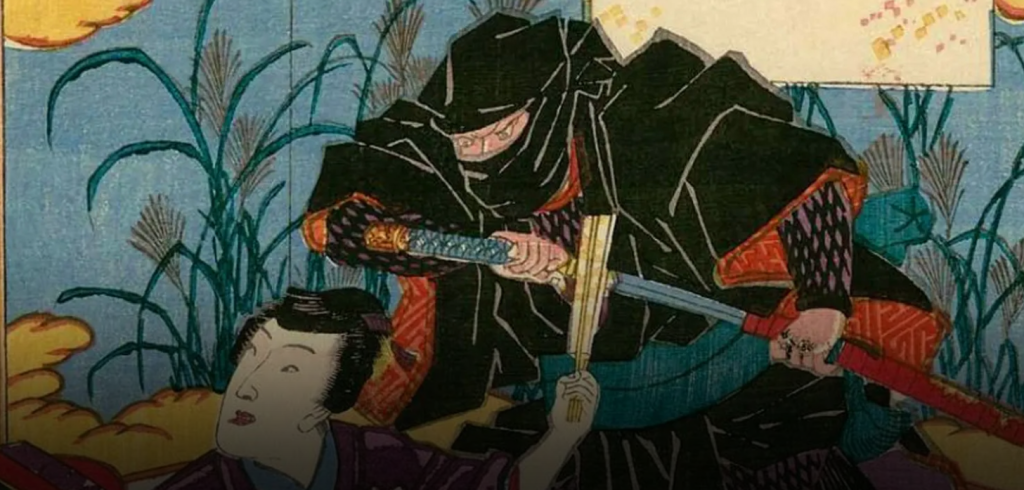Ninjas, a silent group of men in black who engaged in espionage, sabotage, and assassination, remain a beloved Japanese character in modern books and movies. But the facts about ninja history may be as elusive as the iconic samurai themselves.
Ninja history: myth or reality?
Some modern scholars question whether the ninja actually existed, or were merely a mythological invention. This skepticism stems in part from the fact that ninjas are often portrayed as martial arts masters with supernatural abilities, or as sorcerers who can summon fire with their fingertips and move wind and objects through hand gestures. In many stories, they can fly and even split into multiple bodies to thwart those in hot pursuit.
Most scholars believe that historical accounts of ninjas, like those of many underworld figures, have retained a certain amount of authenticity, albeit with excessive embellishment. Stephen Turnbull, an expert on Japanese history and author of Ninja, writes: “Even among scholars, the common practice is simply to accept the original ninja myth as a real historical phenomenon, which has been greatly romanticized over the centuries and more recently highly commercialized.” : “Debunking the Myth.
Ninjas: Spies and Mercenaries
Since the 14th century, ninjas have been active with Japanese daimyo or feudal warlords, primarily in intelligence and counter-espionage work. However, due to their inherently mysterious nature, ninjas are rarely mentioned in the historical record. Most of what is known comes from documents from the 1600s and later, when the ninja flourished after the end of the Shogunate Wars.
What makes the ninja different? Unlike Japan’s other famous samurai and warriors, who were trained warriors from elite families, ninjas came from all walks of life. Unlike the samurai, ninjas were not bound by a strict code of honor (Bushido) and were not required to fight face-to-face. Warlords could hire ninjas for guerrilla warfare, which would humiliate the samurai.
Since ninjas were mercenaries and spies, they needed to be particularly adept at disguise and infiltration. While they are often described as trained assassins, they are more inclined to use stealth, distraction, and counter-espionage skills than they are to kill. Their ultimate duty is to secretly gather useful information for their lords.
Origins of the Ninja Arts
As mercenaries, ninjas fought for warlords throughout Japan. However, according to the Jungura Samurai Precepts, a dictionary of samurai martial arts, the best ninjas of the feudal era came from the provinces of Iga and Koga, which were located in the mountainous region southeast of Kyoto, the capital of Japan at the time. By the 14th century, more than two dozen schools of ninja had emerged throughout Japan. According to the Manzen Shukai, a 22-volume 17th-century encyclopedia of the ninja arts, ninjutsu drew its inspiration from the guerrilla tactics of Sun Tzu, a brilliant Chinese war strategist.
The Manshinshukai describes ninjutsu as social skills, conversational skills, mnemonics (memory aids), transmission techniques, medicine, astronomy, and even sorcery. Ninjas were trained to use their intelligence and vast knowledge to infiltrate any social environment, gain knowledge and escape safely, reporting their findings to their guardians. Mentally, a good ninja required a high degree of self-discipline and purity of mind, Yuji said, “a state of absolute peace of mind that would not flinch even if a naked, sharp blade was pressed against his chest.”
Defining Moments in Ninja History
Although the origins of the ninja can be traced back to the 12th century or earlier, the ninja were active when territorial conflicts between Japanese warlords were rampant. Ninjas played important roles in wars such as the Civil War (1336-1392) and the Warring States Period (1467-1568).
Revival of Popular Culture
With all these colorful stories, it is not surprising that the ninja became an icon of popular culture in Japan, and the establishment of the Museum of the Wonders of Ninjutsu by the mayor of Iga, Heiichiro Ose, in the 1950s played an important role in bringing ninjutsu into the wider public eye. A plethora of books, articles and popular novels followed.
The ninja scene in the 1967 James Bond movie Thunderdale became a pivotal popular moment. Just as hundreds of ninja assassins entered the lair of Ghostbusters in commando style through a broken skylight and hurled their catapults, the ninja myth had broken through and permeated mainstream popular culture. By the 1980s, the ninja had grown into a huge industry, appearing in movies, television, video games, toys, comics, and even product naming-from blenders to motorcycles to perfume. The Teenage Mutant Ninja Turtles became a popular animated series, and their associated toys were featured in several movies and television shows.




